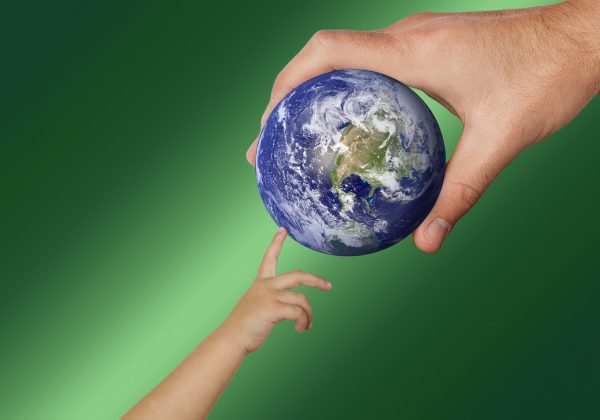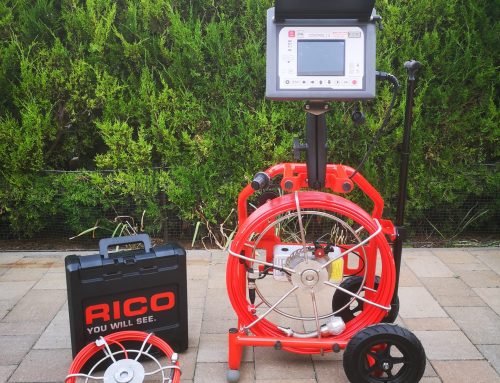Introduction
Sewer inspections play an essential role in maintaining urban infrastructure and protecting the health of the population. Thorough sewer network inspections are essential for identifying problems in a timely manner and preventing subsequent damage. In this article, we focus on the environmental aspects of sewer inspections, showing how they play a key role in maintaining ecological balance and preventing illegal discharges.
The importance of sewer inspections
The disposal and treatment of sewage and other pollutants that accumulate in urban areas is essential for the health and well-being of the community. Problems in sewer systems, such as blockages or damage, can have serious consequences, including the development of infections and environmental pollution.
Importance of environmental considerations
Environmental protection is closely intertwined with the inspection and maintenance of sewer networks. Illegal discharges, oil spills or chemical leaks can pose a serious threat to the environment. Therefore, it is of utmost importance to sewer inspections During the inspection, not only the physical condition of the network is checked, but also environmental aspects are taken into account.
Basics of camera sewer inspections
Operating principles and technology
Camera sewer inspections take advantage of modern technology to thoroughly map sewer networks and identify potential problems. These devices typically use small cameras and lighting systems that are inserted into the sewer system. The cameras are capable of capturing high-resolution images, and lighting devices allow detailed inspections to be performed even in darker areas. The operating principles include live image transmission, which allows professionals to assess the condition of the sewer network in real time.
The role of tools in mapping sewer networks
Cameras used during sewer inspections play a key role in the detailed mapping of sewer networks. These devices allow professionals to visually analyze the internal condition of the sewer system and identify possible damage, blockages or other problems. Based on the camera footage, professionals can accurately identify the necessary maintenance or repair measures, thereby minimizing the risk of environmental damage.
In addition, the tools help professionals detect illegal emissions or pollutants Camera sewer inspections allow professionals to immediately detect and respond to these types of problems, thereby contributing to environmental protection and pollution to prevent.

The relationship between environmental protection and sewer inspections
The problem of illegal emissions
Illegal discharges are a global problem, seriously damaging the environment and endangering water quality. According to the World Health Organization (WHO), millions of tons of pollutants are released into living waters every year, which has a number of negative impacts on wildlife and human health. Illegal discharges are a major source of water pollution, and reversing this trend is of paramount importance for a sustainable future.
The role of camera inspections in detecting illegal emissions
Camera-based sewer inspections play a key role in identifying and documenting illegal discharges. According to the U.S. Environmental Protection Agency (EPA), regular sewer inspections can help identify illegal activities in remote areas where traditional inspections would be difficult. Using these technologies can help detect illegal discharges more effectively, helping to keep our waterways clean.
Prevention and immediate intervention options
Camera sewer inspections not only help to identify problems later, but also actively contribute to prevention and immediate intervention. With the help of intelligent sensors and data analysis systems, professionals are able to monitor sewer networks in real time. This allows them to immediately detect deviations from normal operating parameters and take urgent measures to prevent or minimize emissions.
Research by the Water Research Centre in England has shown that regular and technologically advanced sewer inspections generally increase the efficiency of water networks and reduce pollutant emissions. This makes environmental considerations in sewer inspections not only important from a legal perspective, but also crucial in terms of practical results in protecting our living waters.

Application of environmentally friendly technologies
Sustainable energy devices
Energy-efficient and sustainable solutions are also increasingly being used in sewer inspections. Some camera devices are now powered by solar energy, reducing their environmental footprint. According to the Green Energy Council, using such devices can significantly reduce annual carbon emissions, contributing to the benefits of sustainable energy sources.
Data collection methods and environmentally friendly solutions
Modernizing data collection not only increases efficiency, but also reduces ecological impacts. The use of intelligent data collection systems and artificial intelligence allows specialists to precisely analyze the condition of sewer networks, minimizing the amount of unnecessary data and the time required for inspections. Such optimization not only reduces environmental burden, but also optimizes energy consumption.
According to the United Nations Environment Programme (UNEP), modernizing data collection and analysis can reduce the amount of energy used in data collection and thus the environmental impact. Such technologies not only increase the efficiency of canal inspections, but also contribute to sustainable water management and environmental protection.
The use of these environmentally friendly technologies in the field of sewer inspections not only meets environmental protection considerations, but also makes this important activity more efficient and economical. With the help of advanced technologies and innovative solutions, sewer inspections can be more transparent and environmentally friendly, contributing to sustainable water management and the preservation of a clean environment.
Future prospects
Technological developments and additional environmental aspects
The future of sewer inspections is significantly shaped by innovative technological developments. The use of smart sensors, artificial intelligence and machine learning will enable even more accurate and efficient inspections. For example, networked sensors can provide real-time data and use AI-based systems to identify potential problems before they occur. According to research by the UK Environment Agency, such developments could reduce environmental incidents by up to 20%.
The use of sustainable materials and increasing the efficiency of water management are other areas that will be emphasized in the future. The use of environmentally friendly materials, such as biodegradable devices and sustainable construction materials, can contribute to making sewer networks more environmentally friendly.
The role of cooperation in environmental protection and sewer inspections
Collaboration is a key factor in environmental protection and sewer inspections. Partnerships between government agencies, water authorities, businesses and NGOs can make environmental measures more effective. The European Environment Agency (EEA) has shown that initiatives in which governments, industry and NGOs work together are more likely to lead to effective environmental practices.
Collaboration can not only increase the efficiency of canal inspections, but also help raise awareness. By sharing information and experiences, stakeholders can gain a broader understanding of environmental challenges and effective solutions. A collaborative approach can help ensure that future canal inspections rely not only on technological innovation but also on coordinated efforts, thereby promoting sustainable water management and environmental protection.
Overall, camera sewer inspections play a key role not only in monitoring the condition of sewer networks, but are also essential tools in environmental protection and sustainability. Through an integrated approach, technological developments and collaboration, we can create a future where sewer networks effectively protect water resources, minimize pollution and promote sustainable water management.
Are you looking for a reliable team for camera sewer inspections? Choose us, because we work with the most professional equipment and we guarantee our work!












